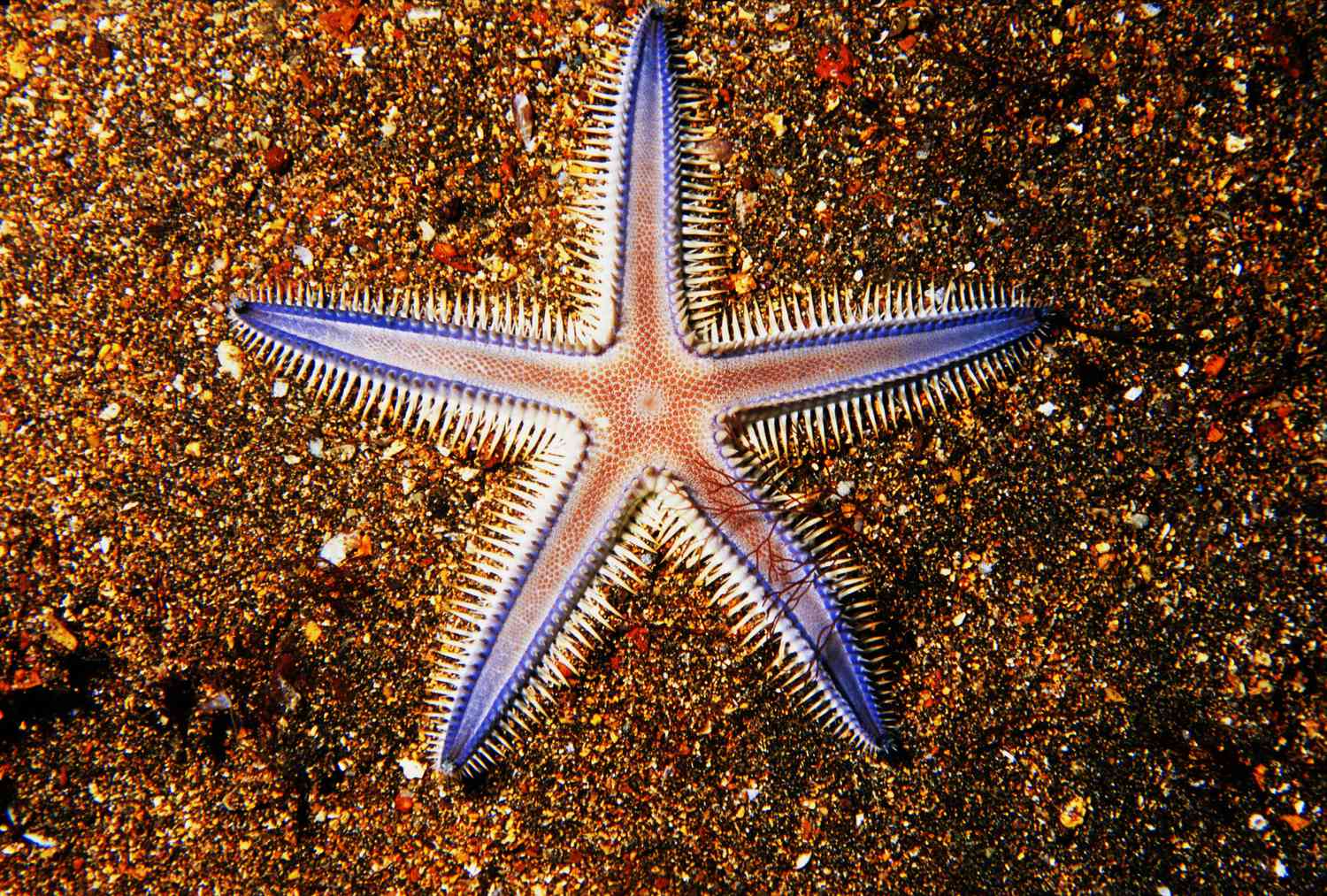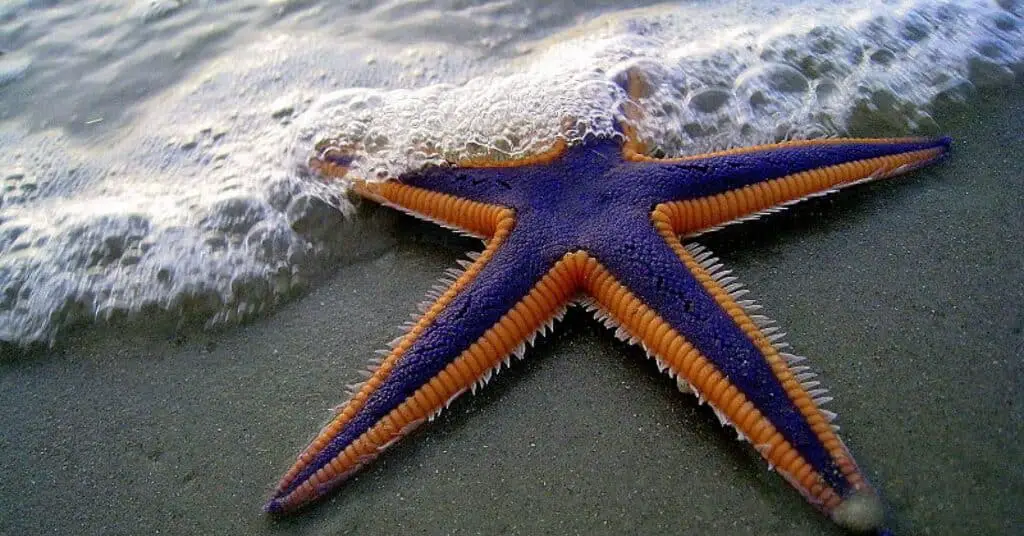What Are The Characteristics Of Starfish

Introduction
What Are The Characteristics Of Starfish: Starfish, scientifically known as asteroidea, are captivating marine creatures that inhabit oceans across the world. They are renowned for their unique and intriguing characteristics, which set them apart from many other marine organisms.
One of the most distinctive features of starfish is their radial symmetry, which means they have a central point and multiple identical arms radiating outwards from it. Typically, starfish have five arms, although some species can have more. This radial symmetry allows them to move gracefully in any direction, resembling the appearance of a star, hence their common name.
Another remarkable trait of starfish is their incredible regenerative ability. They can regenerate lost or damaged arms, making them one of the few animals capable of such extensive self-repair. This ability has fascinated scientists and has become a subject of extensive research.
Starfish are also equipped with a hydraulic water vascular system, which they use for various functions, including locomotion and capturing prey. Tiny tube feet located on their underside play a vital role in these processes, allowing them to grip surfaces and move with surprising agility.
The diversity among starfish is astounding. They come in various shapes, sizes, and vibrant colors, making them a colorful and visually striking component of marine ecosystems. From the iconic orange and purple ochre stars to the elaborate patterns of the feather stars, these creatures exhibit a captivating array of appearances.

What is a unique characteristic of starfish?
They have a surprisingly unusual anatomy, with no brain or blood, yet are able to digest food outside their body. Regenerating their own arms is perhaps one of the most useful things a starfish can do. This attribute can be used in many different ways.
One unique characteristic of starfish is their remarkable ability to regenerate lost body parts. Starfish possess a remarkable regenerative capability that sets them apart from many other marine creatures. If a starfish loses an arm due to predation or injury, it can regrow that arm over time. This process is made possible by their decentralized nervous system and the presence of vital organs, such as their stomach, in multiple parts of their body.
The regrowth of a lost arm begins with the formation of a special structure called a “rudimentary arm” at the site of the injury. From there, the starfish can gradually regenerate all the missing structures, including the tube feet and spines. This extraordinary regenerative power not only aids in their survival but also makes them a subject of scientific fascination.
Additionally, starfish come in a wide array of colors and patterns, making them visually captivating. Their distinctive five-armed radial symmetry and their ability to move using hundreds of tiny tube feet also contribute to their uniqueness in the animal kingdom. Overall, the regenerative ability of starfish is a remarkable feature that sets them apart and makes them a fascinating species in the world of marine biology.
What are two characteristics of sea stars?
Common sea stars have five pointed arms and hundreds of tiny tube feet on their pale undersides. They vary in color from yellowish-orange to deep purple, and have small, pale spines that give them a rough appearance. A bright red or orange “eye” spot appears in the center of its body.
Sea stars, also known as starfish, exhibit a fascinating array of characteristics that distinguish them from other marine creatures. Two notable traits that define sea stars are their remarkable regenerative abilities and their unique method of locomotion.
Firstly, sea stars possess an extraordinary capacity for regeneration. If a sea star loses one of its arms due to injury or predation, it has the remarkable ability to regrow the lost limb over time. In some cases, a single severed arm can even regenerate into an entirely new sea star, making them a symbol of resilience and regeneration in the marine world.
Secondly, sea stars employ a distinctive mode of locomotion that sets them apart from many other marine species. They move using a hydraulic water vascular system, which involves hundreds of tiny tube feet located on their underside. These tube feet operate by filling with water to create pressure, allowing sea stars to grip and release surfaces, essentially “walking” across the ocean floor. This method of movement not only facilitates their search for prey but also contributes to their overall adaptability in various marine environments.
Sea stars are captivating creatures known for their remarkable regenerative abilities and their unique mode of locomotion through a hydraulic water vascular system. These characteristics make them both intriguing and vital members of the marine ecosystem.
What are the characteristics of echinoderms starfish?
Although they may appear very different, echinoderms all have two major defining characteristics that set them apart from all other animals: a water vascular system and five-sided radial symmetry. The water vascular system is a complex series of canals running through an echinoderm’s body (Fig. 3.84).
Echinoderms, such as starfish, exhibit several distinct characteristics that set them apart from other animal phyla. These remarkable marine creatures, comprising approximately 7,000 species, showcase a unique combination of features.
First and foremost, echinoderms possess a distinctive radial symmetry, typically with five arms radiating from a central point. This five-fold symmetry is a defining trait of the group, even though some species may have variations in arm numbers.
Echinoderms are also renowned for their endoskeletons, composed of tiny, calcareous plates known as ossicles. These plates give them their spiny appearance and serve as a form of protection.
Another intriguing feature is their water vascular system, which functions as both a hydraulic system for movement and a means of capturing food. This hydraulic system employs a network of water-filled canals and tube feet, allowing them to move, grasp objects, and even pry open shells for feeding.
Echinoderms exhibit remarkable regenerative capabilities, being able to regenerate lost limbs and even parts of their central body. This regrowth ability contributes to their survival in the harsh marine environment.
Lastly, echinoderms, including starfish, display a simple yet efficient nervous system, primarily relying on a nerve ring encircling the mouth for coordination and sensory perception.
What is a group of starfish called?
Answer and Explanation: A group of sea stars or starfish are called a ‘galaxy. ‘ Sea stars can be found living at the bottom of marine environments throughout the world’s oceans.
A group of starfish is commonly referred to as a “constellation” or a “grouping.” However, it’s important to note that starfish are not known for forming large, organized groups or social structures like some other animals do, such as schools of fish or flocks of birds. Instead, starfish are predominantly solitary marine creatures.
Starfish are often found in various habitats along the ocean floor, from rocky shorelines to sandy seabeds, and they tend to forage for food and move independently. While it is possible to encounter multiple starfish in close proximity, they do not exhibit the coordinated behavior or group dynamics seen in many other species. Each starfish typically goes about its activities individually, using its tube feet to navigate and feed on prey like mollusks and small invertebrates.
There isn’t a specific term for a group of starfish like there is for some other animals. Starfish are primarily solitary creatures that do not form organized social groups or exhibit collective behaviors as a characteristic of their natural behavior.
What are 5 interesting facts about starfish?
10 Sea Star Fun Facts – Pacific Beach Coalition
- Discover 10 fun facts about the Sea Stars!
- They have no brain and no blood.
- They can live up to 35 years.
- Starfish is not their right name, they should always be called Sea Star!
- There are around 2,000 species of sea star.
- They cannot survive in fresh water.
- They can regenerate.
- They eat inside out.
Here are five interesting facts about starfish:
- Not Really Fish: Despite their name, starfish are not actually fish. They belong to a group of marine animals called echinoderms, which also includes sea urchins and sea cucumbers. Their proper scientific name is “sea stars.”
- Regeneration Masters: Starfish have an incredible ability to regenerate lost body parts. If a starfish loses an arm, it can often grow it back over time. In some cases, a whole new starfish can even regenerate from a single arm if it has a portion of the central disc attached.
- Hundreds of Tiny Feet: On the underside of a starfish’s arms, they have numerous tube feet, which they use for various functions, including locomotion, capturing prey, and maintaining balance. These tube feet are equipped with suction cups that help the starfish grip onto surfaces.
- Water-Powered Movement: Starfish move using a unique water vascular system. They fill and expel water into their tube feet to create hydraulic pressure, allowing them to move in a slow, creeping fashion. This hydraulic system also aids in capturing and handling prey.
- Predatory Feeding Technique: Starfish are carnivorous predators. They use their tube feet to pry open the shells of clams, oysters, and other mollusks, and then they evert their stomachs to digest their prey externally. This allows them to consume organisms that are much larger than their mouths.
These intriguing facts highlight the remarkable adaptations and behaviors of starfish, making them a fascinating subject of study and observation in marine biology.
Can you touch or handle a starfish?
Starfish, also known as sea stars, have a tough, spiny outer skin that provides some protection, but they are still sensitive to touch. When handling a starfish, it’s crucial to wet your hands first to prevent removing their protective mucous layer, which helps them regulate water and stay healthy.
Gently pick up the starfish, supporting it evenly across its body to distribute weight and avoid putting pressure on its limbs. Avoid lifting them by their arms, as this can cause injury. Keep in mind that starfish are best observed in their natural habitat, where they play essential roles in marine ecosystems.
If you encounter a starfish while exploring tide pools or along the shoreline, take a moment to appreciate their unique beauty and fascinating biology, but always remember to leave them in their environment, untouched and undisturbed. Respecting these creatures ensures their well-being and contributes to the preservation of our marine ecosystems.
How do starfish breathe underwater?
Starfish possess a unique and efficient method of respiration that allows them to thrive underwater. Unlike mammals, they don’t have lungs or gills. Instead, starfish rely on a network of small, tube-like feet called tube feet, which are located on their undersides.
These tube feet are equipped with specialized structures called papulae, which serve as their primary respiratory organs. Papulae are thin-walled projections that extend from the body of the starfish. They are filled with a network of fine blood vessels that exchange gases with the surrounding seawater. This process allows starfish to extract oxygen dissolved in the water and expel carbon dioxide.
Through a hydraulic system, starfish control the movement of their tube feet, which enables them to navigate, capture prey, and maintain their position in the water. This system also aids in respiration, as the flexible papulae can adjust their surface area to optimize gas exchange.
It’s important to note that starfish are highly adapted to marine environments, and their respiratory system is finely tuned to support their underwater lifestyle. This specialized method of breathing allows them to survive and thrive in the diverse habitats they inhabit, ranging from tidal pools to the deeper reaches of the ocean floor.
Do starfish have a brain or nervous system?
Starfish, intriguingly, do not possess a centralized brain like many other organisms. Instead, they have a decentralized nervous system. Their anatomy includes a nerve net, a simple network of interconnected nerve cells that extends throughout their body. This nerve net allows starfish to process information and coordinate their movements.
At the center of a starfish, there’s a ring-shaped structure called the circumoral nerve ring, which encircles the mouth. From this central ring, nerve cords extend along each arm, connecting to the radial nerves that run down the length of each limb. This arrangement allows for a degree of coordination in their movements.
While the decentralized nervous system enables basic sensory and motor functions, starfish are not capable of complex cognitive processes or conscious thought. They do, however, exhibit interesting behaviors driven by their nervous system. For instance, they can respond to stimuli such as light and touch, enabling them to navigate their environment, find food, and avoid predators.
Overall, the decentralized nervous system of starfish showcases the diversity of neural arrangements in the animal kingdom, illustrating that intelligence and adaptability can arise through various biological mechanisms.

Conclusion
Starfish are truly remarkable marine creatures with a set of characteristics that make them both fascinating and integral to their oceanic ecosystems. Their radial symmetry, with typically five arms, gives them a distinctive appearance and unparalleled flexibility in movement. This unique body plan has evolved over millions of years, enabling starfish to thrive in various marine environments.
Perhaps the most astonishing feature of starfish is their regenerative ability. Their capacity to regrow lost or damaged arms is a testament to their resilience and adaptability, making them subjects of scientific intrigue and admiration. This characteristic highlights the incredible regenerative potential that exists within the animal kingdom.
The hydraulic water vascular system of starfish, coupled with their tube feet, is another essential aspect of their anatomy. These structures enable starfish to navigate, capture prey, and maintain their grip on various surfaces, showcasing their adaptability and resourcefulness in their underwater world.
Lastly, the vast diversity of starfish species, each with its own unique colors and patterns, underscores the beauty and complexity of marine life. These creatures play crucial roles in maintaining the balance of marine ecosystems by controlling populations of prey species and serving as prey themselves.
In essence, starfish are emblematic of the wonders of the ocean, serving as a reminder of the incredible diversity and adaptability of life beneath the waves. Their characteristics continue to inspire scientific inquiry and awe among those who explore the mysteries of the deep sea, emphasizing the importance of preserving these fragile ecosystems for generations to come.



